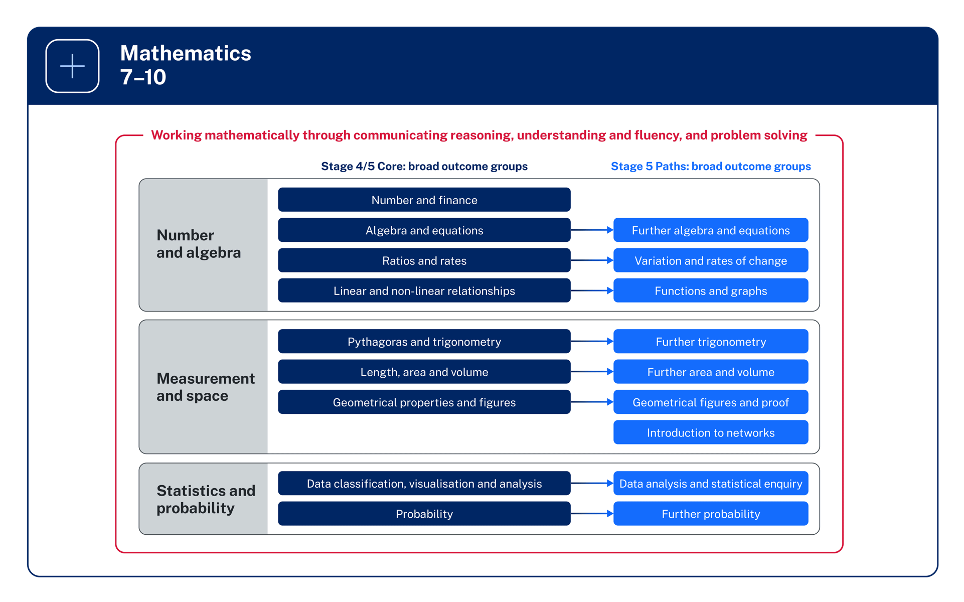The Mathematics K–10 Syllabus (2022) now includes outcomes and content for years 3–10. Planning and preparation for years 7–10 begins from 2023 with implementation in 2024.
The Mathematics K–10 Syllabus (2022) recognises the critical importance that working mathematically plays across all areas of mathematics. The addition of a new Core-Paths structure, recognises the need to extend students as far along the continuum of learning as possible, to provide solid foundations for the highest levels of student achievement.
What you need to know
- In 2023, teachers engage with the syllabus, and plan and prepare for implementation of the curriculum.
- In 2024, implementation commences in schools for Year 7 and 9.
- In 2025, implementation commences in schools for Year 8 and 10.
- The Core outcomes provide students with the foundation for Mathematics Standard 2 in Stage 6.
- The decision regarding which Path focus areas students engage with is made at a school level.



Leave A Comment